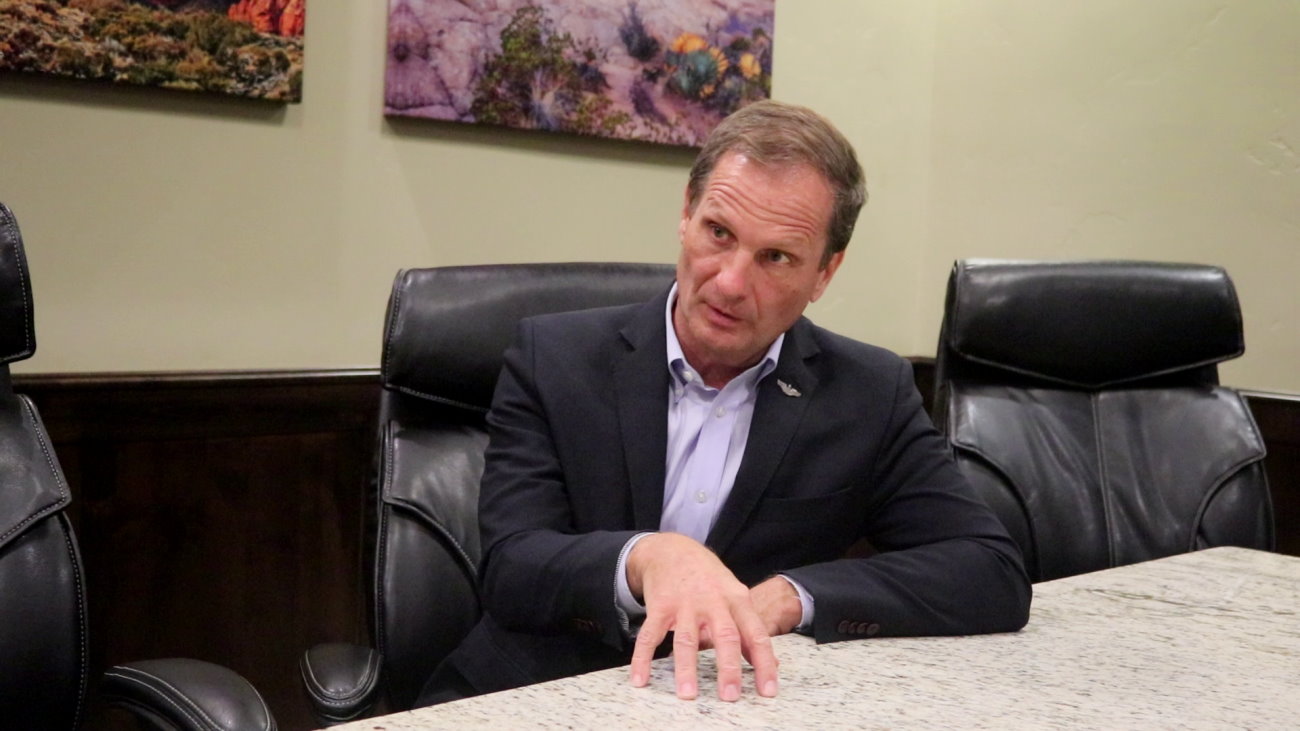ST. GEORGE — In last year’s state legislative session, Utah passed a bill that would make daylight saving time permanent and do away with the biannual time change. Unfortunately, that can’t go into effect until the federal statute is changed. This could happen if bills recently filed with the U.S. Senate and House get through Congress.

Utah Congressman Chris Stewart and a bipartisan group of senators have introduced legislation in the House and Senate to end the time change. Stewart announced his Daylight Savings Act over Twitter on Sunday morning.
“Is anyone else tired of needlessly resetting their clocks twice a year? I’m sponsoring the Daylight Savings Act to put an end to these unnecessary time changes,” he posted. “The federal government needs to take a step back and allow states to stay on daylight saving time if they choose.”
On Monday, Stewart joked with Rep. Dan Crenshaw, R-Texas, who complained over Twitter about the time change stealing an hour of his birthday. Stewart replied that his bill would allow them to “steal that hour back.”
If we stayed on daylight saving time year-round, your bday would get the 24 hours it deserves every year.
Lucky for you, my bill, the Daylight Savings Act, would allow TX (and every other state) to choose to stop changing the clocks.
Let’s steal that hour back. https://t.co/Qi0iUGH8oy
— Rep. Chris Stewart (@RepChrisStewart) March 15, 2021
A similar bill, the Sunshine Protection Act of 2021, was already introduced to the House in January by Rep. Vern Buchanan, R-Florida. However, that bill hasn’t advanced since its introduction.
Sen. Marco Rubio, R-Florida, along with seven other senators, recently introduced the Senate version of the Sunshine Protection Act, which is based on a law passed by the Florida Legislature in 2018 to go to year-round daylight saving time. Like Utah, for this change to take place, a change in federal statute is also needed.
“The legislation, if enacted, would apply to those states who currently participate in DST, which most states observe for eight months out of the year,” a press release from Rubio’s office states. “Standard Time, from November to March, is only observed for four months out of the year. The bill would simply negate the need for Americans to change their clocks twice a year. Many studies have shown that making DST permanent could benefit the economy and the country.”
While the Senate bill would have states that participate in daylight saving time make that time permanent, Stewart’s Daylight Savings Act would give the states the opportunity to make their own decision, according to an press release from Stewart’s office sent Monday.
“Nobody wants to reset their clocks twice a year,” Stewart wrote. “This is an unpopular, outdated practice that does nothing but confuse our schedules. It’s time the Federal Government let the states decide.”
The press release also listed the following potential effects of making daylight saving time permanent:
- Reduces car crashes and car accidents involving pedestrians. Better aligning daylight hours to drivers’ standard work hours increases visibility, according to the American Journal of Public Health and the Journal of Safety Research. Shifting normal traffic patterns to an hour off from nocturnal wildlife’s behavior also reduces the number of vehicle collisions with wildlife by 8-11%.
- Reduces risk for cardiac issues, stroke and seasonal depression.
- Reduces the number of robberies by 27%, according to a 2015 Brookings Institution, because of additional daylight in the evenings.
- Benefits the economy, according to a study by JP Morgan Chase, which found that there is a drop in economic activity of 2.2-4.9% when clocks move back.
- Reduces childhood obesity and increases physical fitness. According to studies published by the International Journal Behavioral Nutrition and Physical Activity and the Journal of Physical Activity and Health, children see an increase in physical activity during DST. The Journal of Environmental Psychology found that DST increased pedestrian activity by 62% and cyclists activity by 38% because of additional daylight.
- Benefits the agricultural economy, which is disproportionately disrupted by biannual changes in time by upsetting the synergy between farmers’ schedules and their supply chain partners.
- Reduces energy usage. A 2008 study by the U.S. Department of Energy found that during the four weeks the U.S. extended daylight savings from the 2005 law, there were savings of about 0.5% in electricity per day. Later studies have also shown that the energy savings are minimal, but a small savings does occur.
A little history

Starting on April 30, 1916, Germany and its World War I ally Austria-Hungary were the first to use daylight saving time as a way to conserve coal during wartime. Britain, most of its allies and many European neutrals soon followed suit. Russia and a few other countries waited until the next year, and the United States adopted it in 1918.
During the energy crisis of the 1970s, Congress passed an act keeping daylight saving time year-round. That lasted from Jan. 6, 1974, to Feb. 23, 1975, when the order was rescinded, allowing standard time to return Oct. 27, 1975.
Hawaii is the only state that has fully opted out of daylight saving time. The majority of Arizona also does not observe it. However the Navajo Nation, which is primarily situated in Arizona and extends into Utah and New Mexico, does observe the time change. The Hopi Nation, completely surrounded by the Navajo Nation, does not observe daylight saving time.
Copyright St. George News, SaintGeorgeUtah.com LLC, 2021, all rights reserved.